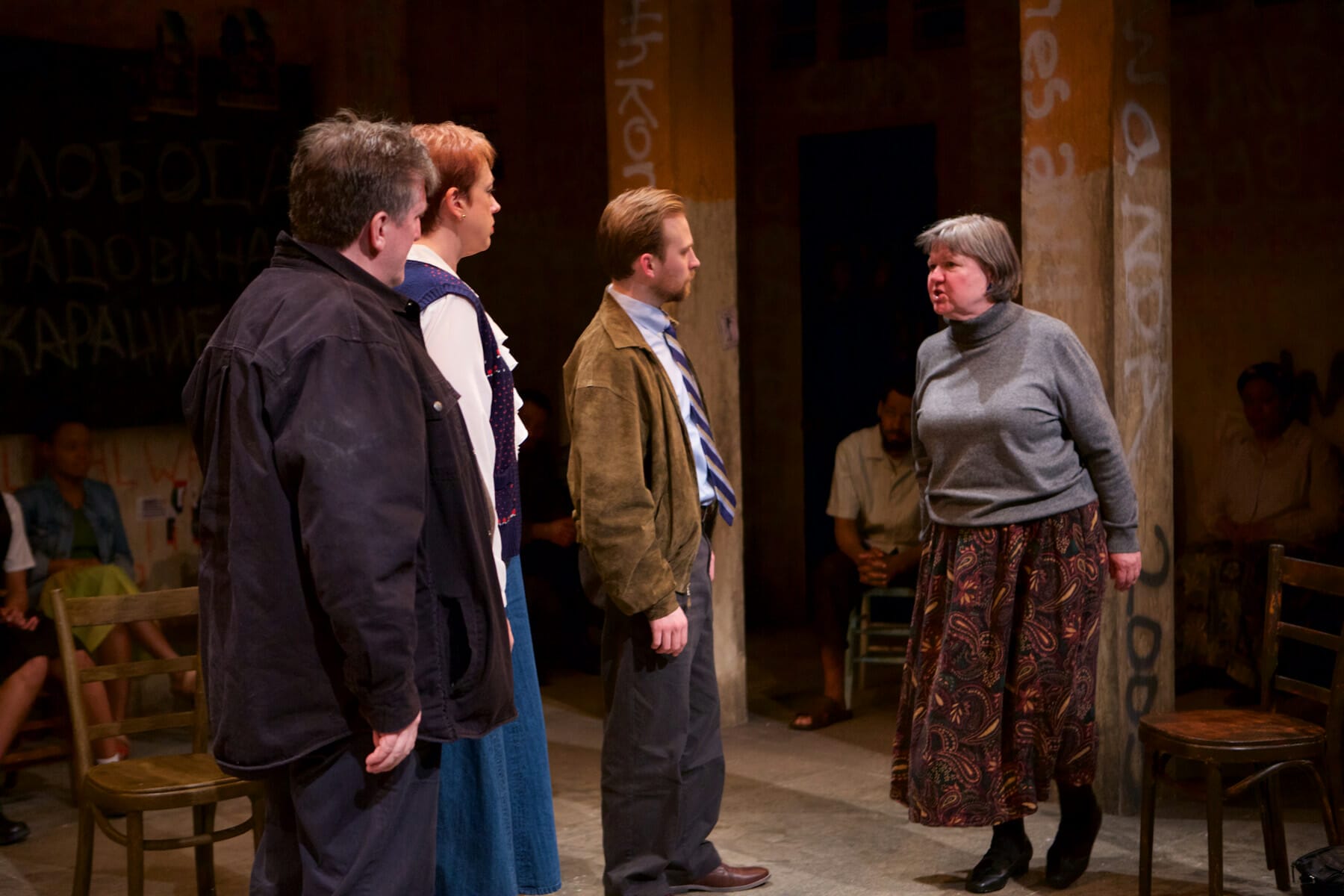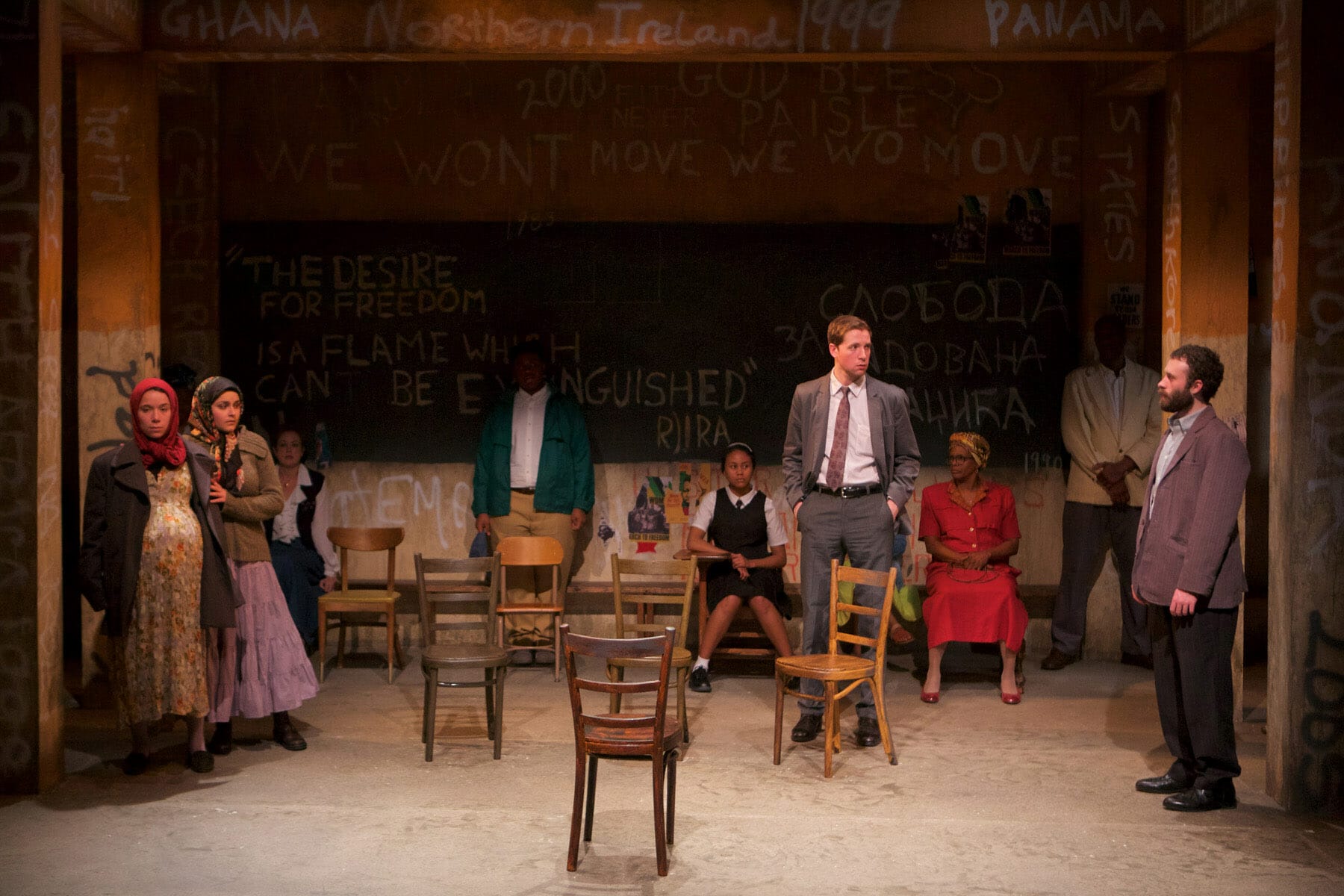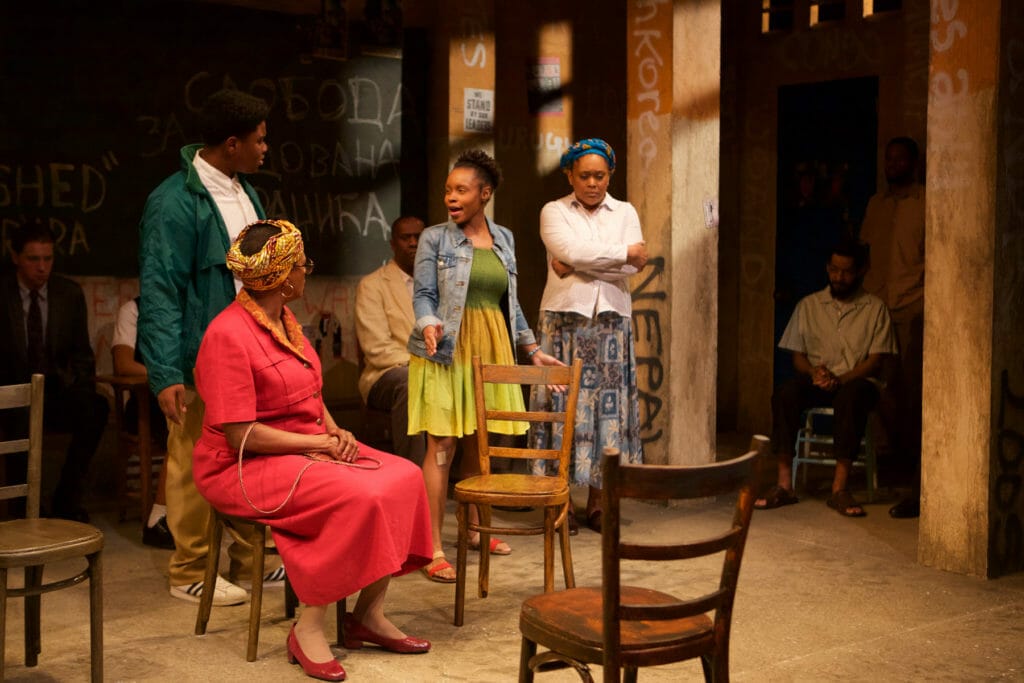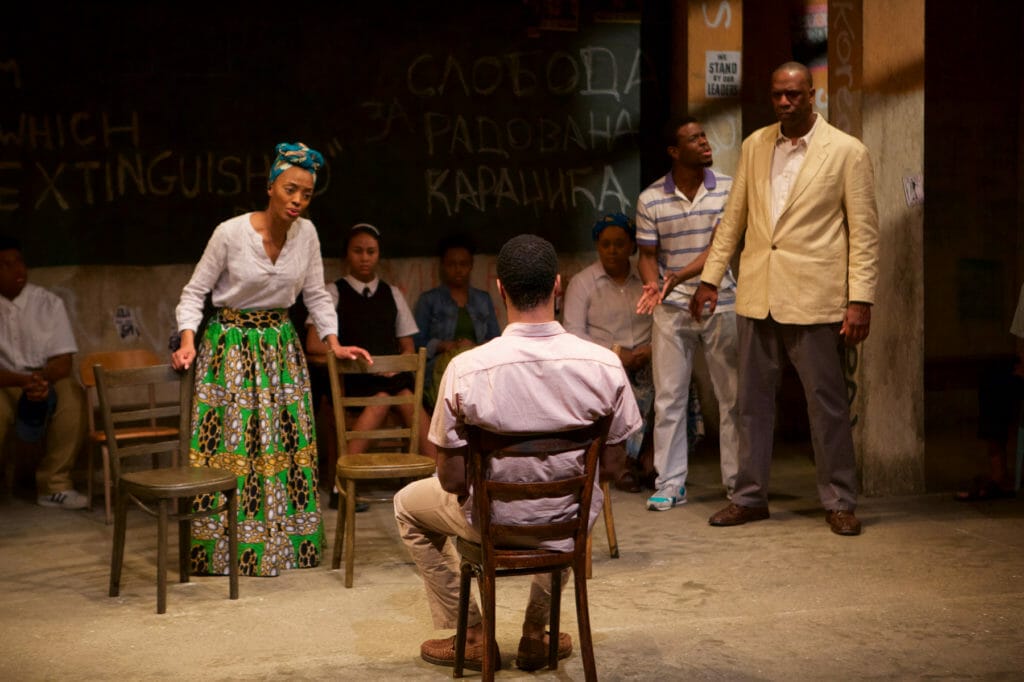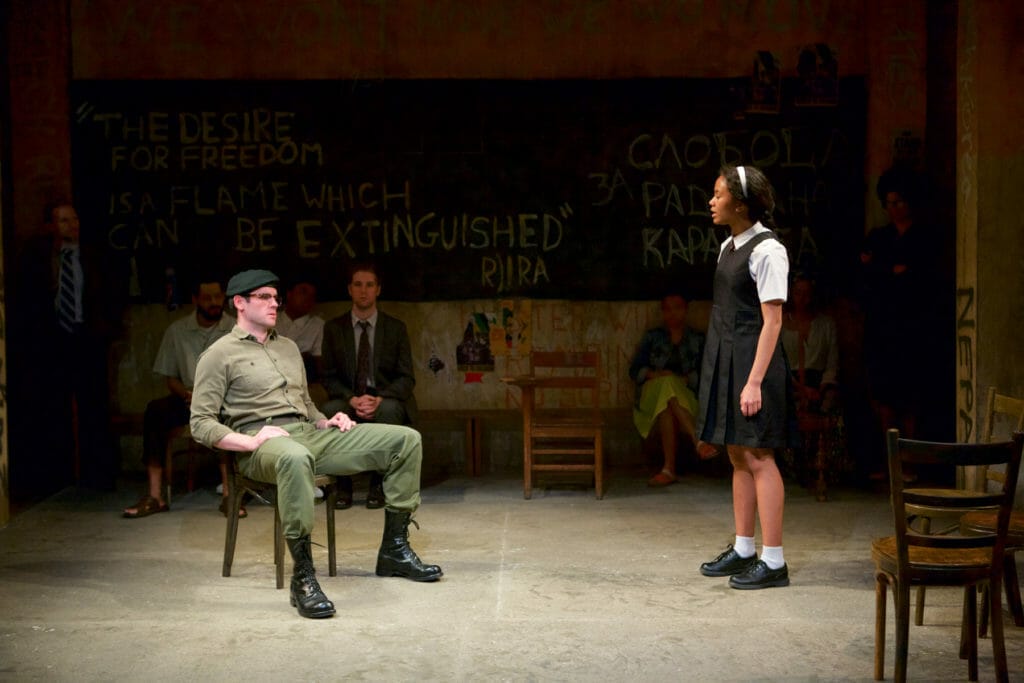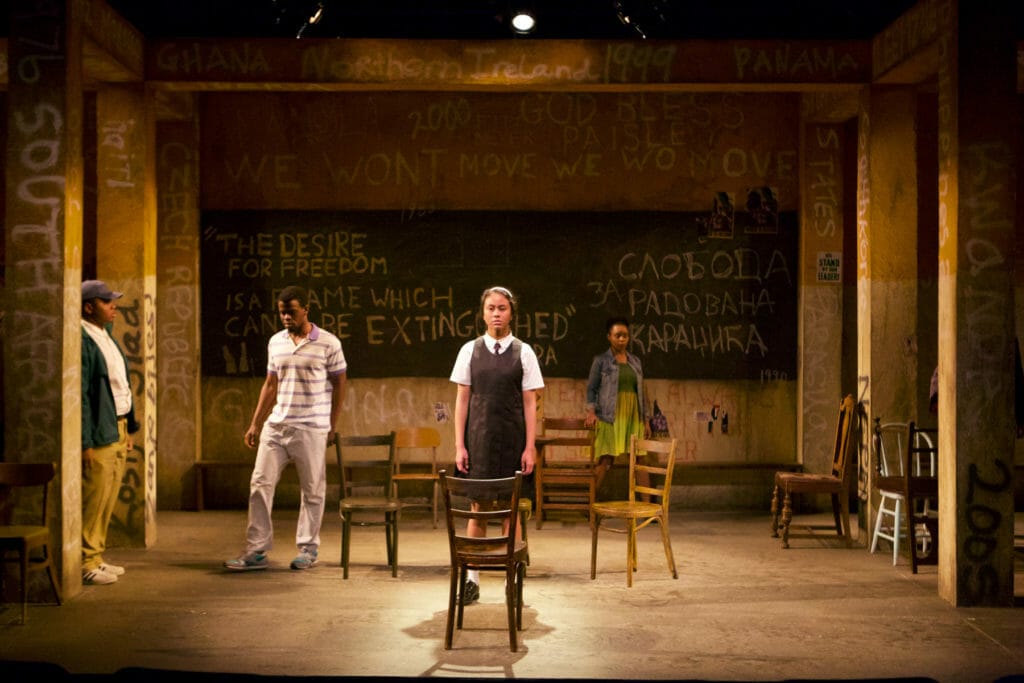“Forgiving and being reconciled to our enemies or our loved ones are not about pretending that things are other than they are. It is not about patting one another on the back and turning a blind eye to the wrong. Truth reconciliation exposes the awfulness, the abuse, the hurt, the truth. It could even sometimes make things worse. It is a risky undertaking but in the end it is worthwhile, because in the end only an honest confrontation with reality can bring real healing.” – Archbishop Desmond Tutu
Dramaturg Gabrielle Randle included this quote in her dramaturgical information that Sideshow provided to audiences upon entering the theater. I remember reading the quote before the play began and found myself intrigued. Looking back, Archbishop Desmond Tutu’s words provided a useful context for that which we were about to see – particularly in the exploration of risk taking.
truth and reconciliation at Sideshow Theatre Company
Written by debbie tucker green and Directed by Jonathan L. Green, truth and reconciliation covers 30 years, featuring five different countries and conflicts, and utilizing 22 actors. That in itself is a risk – bringing so much history into such a short run-time of 60 minutes. These conflicts range from the aftermath following the South African Apartheid in 1998 and the Rwandan Genocide in 2005, to “The Troubles” in Northern Ireland in 1999.
In addition, the upstairs space at Victory Gardens is small, and finding a place for 22 actors to live for those 60 minutes is yet another risky undertaking. Finally, finding a way to provide a voice for each of these actors within their particular conflict in such a short amount of time – this is another risk.
As one can see, the risks start to stack up, and one might wonder how any theater company can tackle such a challenge. However, Sideshow Theatre has just done that. This ensemble of artists conquered those risks, and showcased an important story that is certainly worth telling.
Clever Use of Space
As I mentioned earlier, the small upstairs space at Victory Gardens can create a challenge – especially for a piece that covers such a wide range of years and countries. However, the intimacy worked to the play’s advantage, and the design team, helmed by Green, used the space to their advantage.
Scenic Designer Yu Shibagaki turned the stage into a waiting room that could be used in each of the five countries featured in the story. On the columns and walls was graffiti with the location and year, such as “Rwanda 2005,” “Bosnia 1996,” or “Zimbabwe 2007.” The small, intimate space proved perfect for this story. debbie tucker green creates scenes depicting relationships within these waiting rooms following each devastating conflict. For example, the first scene took place in South Africa in 1998, showcasing a family of four – a son, a daughter, a mother, and a grandmother. The family is waiting for a solider to tell them where to go amidst the backdrop of the apartheid, and the close proximity between the audience and the events unfolding on stage almost made it feel as if we were intruding on these private moments.
The script jumps around between locations and year without any true order, and with the help of Lighting Designer Jared Gooding, a spot light would highlight the location and year on the wall as the next scene began, helping carry the audience along between moments.
Seamless Transitions
By jumping between time periods and location, the script draws connections between major conflicts, implying that we continue to repeat our mistakes. Green’s use of transitions, and the quick-paced flow between scenes helped bring this textual implication to the surface.
Rather than using a blackout or breaks between scenes, Green chose to have scenes weave in and out of each other. As one scene came to a close, the actors in the following scene would go to take their place. The lack of breaks meant the audience could not check out of the story, and had to follow conflict to conflict until the end. Much as Archbishop Desmond Tutu described in his quote above, Green’s choice meant we had to confront these truths again and again, similar to how to the conflicts continue to rise over time.
Honesty in the Ensemble
In order to share stories based on such harsh realities, the play needed a strong ensemble, and Green certainly found just that. This cast of 22 had to deal with the test of building their arcs in short segments throughout the play as their scenes jumped around mid-story. However, the cast rose to the challenge, and I found that I felt for each of these relationships. The ensemble carried a sense of honesty that truly carried this difficult play.
Honest and frightening, truth and reconciliation is a story that must be shared.
HIGHLY RECOMMENDED
Note: This is now added to the Picture this Post round up of BEST PLAYS IN CHICAGO. Click here to read — Top Picks for Theater in Chicago NOW – Chicago Plays PICTURE THIS POST Loves
And - note: An excerpt of this review appears in Theatre in Chicago.
When:
Through April 16, 2017
Thursdays at 7:30pm
Fridays at 7:30pm
Saturdays at 7:30pm
Sundays at 3:00pm
Run Time: 1 hour, no intermission
Where:
Victory Gardens Theatre
2433 North Lincoln Avenue
Chicago
Photos:
Jonathan L. Green
About the Author:
Lauren Katz is a freelance director and dramaturge, and new to the Chicago Theatre Scene. She recently moved from Washington DC, where she worked with Mosaic Theater Company of DC in Company Management, as well as directed around town with various theaters.
Save


